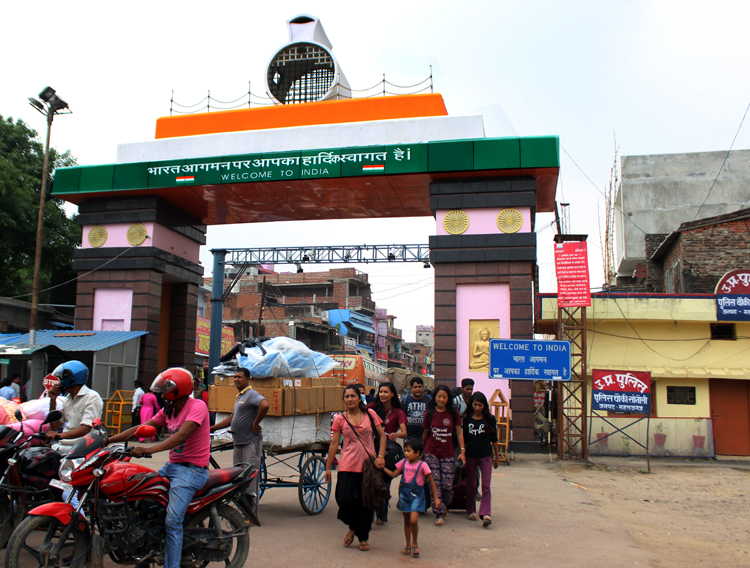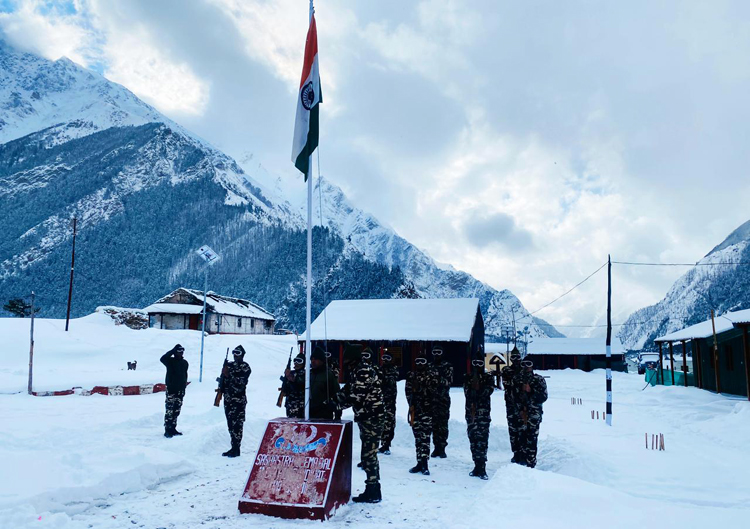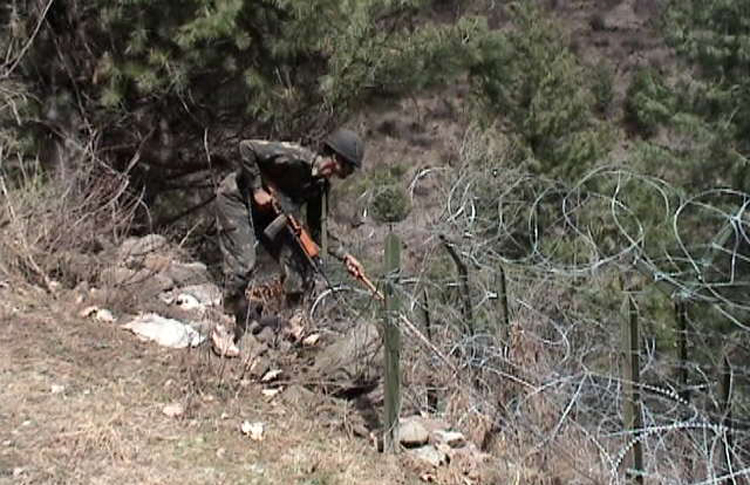INDIAN ARMED FORCES CHIEFS ON OUR RELENTLESS AND FOCUSED PUBLISHING EFFORTS

The insightful articles, inspiring narrations and analytical perspectives presented by the Editorial Team, establish an alluring connect with the reader. My compliments and best wishes to SP Guide Publications.

"Over the past 60 years, the growth of SP Guide Publications has mirrored the rising stature of Indian Navy. Its well-researched and informative magazines on Defence and Aerospace sector have served to shape an educated opinion of our military personnel, policy makers and the public alike. I wish SP's Publication team continued success, fair winds and following seas in all future endeavour!"

Since, its inception in 1964, SP Guide Publications has consistently demonstrated commitment to high-quality journalism in the aerospace and defence sectors, earning a well-deserved reputation as Asia's largest media house in this domain. I wish SP Guide Publications continued success in its pursuit of excellence.
- Operation Sindoor: Resolute yet Restrained
- India’s Operation Sindoor Sends a Clear Message to Terror and the World – ‘ZERO TOLERANCE’
- Japan and India set forth a defence cooperation consultancy framework, talks on tank and jet engines
- Terrorist Attack in Pahalgam in Kashmir: Unfolding a long surgical war against PAK
- Lt General Pratik Sharma takes over Command of Indian Army's Northern Command
Border Laxity is Dangerous
The original deadline to complete the entire stretch of around 1,300 km roads to be constructed along the Indo-Nepal border was by 2016 at a cost of 3,900 crore. However, after a lapse of 12 years, only 29 per cent of the roads are completed.
 |
The Author is Former Director General of Information Systems and A Special Forces Veteran, Indian Army |

A report by the Comptroller and Auditor General (CAG) tabled in Parliament on April 6, 2022, has revealed that the 1300 km long Indo-Nepal border road whose construction was commenced in 2010, is only 29 per cent complete even after a lapse of five years after the deadline and spending over 3,700 crore over the entire stretch. The new road was considered vital to make the border patrolling along the border with Nepal more effective.
Another shocking part disclosed by the CAG report is that the original alignment, as approved by the Cabinet Committee on Security (CCS), has not been followed at several places. Flouting of the orders of the CCS has resulted in at least 81 per cent of the border outposts (BoPs) being away from the main alignment, many as far as 20 km from the international border, making the whole exercise meaningless.
Flouting the orders of the CCS has resulted in at least 81 per cent of the border outposts (BoPs) being away from the main alignment, many as far as 20 km from the international border, making the whole exercise meaningless
The CAG statement says, “As of March 2021, 363 BoPs (81 per cent) were away from the main alignment of the proposed border road. Out of 363 BoPs, 125 were away at a distance of more than 20 km. No provision was made to provide connectivity to such BoPs. The original deadline to complete the entire stretch of 1,377 km was by 2016 at a cost of 3,900 crore. However, after a lapse of 12 years, only 29 per cent of the roads are completed and 1,700 crore has been spent.” The CAG has also pointed out that at many places the alignment is “outside the jurisdiction” of the Sashastra Seema Bal (SSB) guarding our border with Nepal.

The Indo-Nepal border stretches 564 km in Bihar, 640 km in Uttar Pradesh and 173 km in Uttarakhand. A field survey by CAG in West Champaran in Bihar has revealed that the proposed alignment approved by the CCS in September 2010 was in proximity with the border touching Valmiki Nagar, which was on the northernmost side of the wildlife reserve area. According to the CAG, the major reasons for the slow pace of work were on account of acquisition of land and forest clearance.
The CAG statement further reads, “The progress of construction of roads in all the three states was slow and the road construction could not be completed despite the lapse of 10 years. Out of the targeted 1,262.36 km road to be constructed along the Indo-Nepal border, only 367.5 km of road (29 per cent) has been completed (surfacing work) as of March 2021. Although the wildlife clearance under ‘single window system’ was available for border roads, presuming that the wildlife clearance would not be given by the Ministry of Environment, the road construction department (RCD) did not apply for the same and changed the alignment (April 2011).”
How we can deal with national security in such lackadaisical manner especially in the instant case where the project has been going on since 2010
The above raises a number of serious questions, as under:
- Such a project approved by the CCS, which is headed by the Prime Minister, obviously was after a proper project survey and financial assessment for its execution. Who conducted these surveys and under whose supervision in the Ministry of Home Affairs (MHA)?
- Who is overall responsible for monitoring the project at the level of the Centre and do the states of Bihar, UP and Uttarakhand have any subordinate mechanismfor the project which is answerable to the Centre/MHA?
- Why was the alignment changed in April 2011 without seeking forest clearance from the Ministry of Environment and work continued on a different alignment without anyone questioning it and no monitoring since then?
- Was a different alignment chosen by design, on behest of an external agency or with money changing hands between the bureaucrats/politicians at the Centre and State levels, plus the construction agency? Nepal may not, but China would have loved to bribe the way through to ensure the whole exercise of this road is useless for effective patrolling along the Indo-Nepal border; is this not typical of Chinese intelligence?
- Since the SSB is charged with security along the Indo-Nepal border and the new road was to improve their effectiveness, how come they never raised the issue of this new road going haywire? Were they not aware of the purpose of this road? On the other hand, if they did raise the issue, was the DG SSB told to not raise the issue by someone up the ladder?
There may or may not be an inquiry but the usual game of ministries, departments, organisations throwing the blame at each other can be expected, with no bureaucrat even questioned, leave aside prosecution, especially if money has exchanged hands. But the question is how we can deal with national security in such lackadaisical manner especially in the instant case where the project has been going on since 2010 and perhaps would have continued unchecked for another two decades, were it not for the CAG to point out these serious anomalies.

Loosely guarded borders are good for smuggling of arms, narcotics and goods. They also facilitate movement of terrorists, saboteurs and enemy agents.
No doubt loosely guarded borders are good for smuggling of arms, narcotics and goods for the mafias and their handlers in the Centre and State-level administrations, but they also facilitate movement of terrorists, saboteurs and enemy agents. Recall few years back when our rail lines were getting sabotaged causing periodic train accidents, Prime Minister Narendra Modi had hinted at a public rally that saboteurs were crossing over from Nepal.
We must be more than concerned of Chinese inroads in Nepal, their designs on India and Chinese presence in Nepal’s Terai region where Chinese companies have been given rights for digging oil. Besides, there is enough evidence of Pakistan’s ISI entrenched in Nepal since past few years. Why then are we intent on facilitating a cumulative China-Pakistan hybrid war through a loose border? Finally, the Centre needs to review the situation urgently and take requisite steps speedily.





